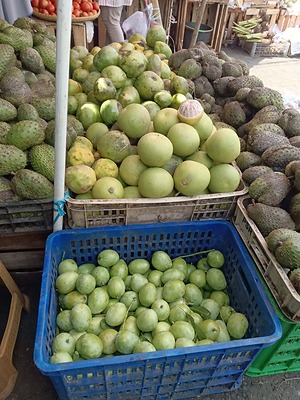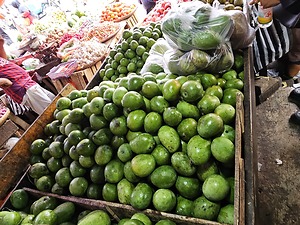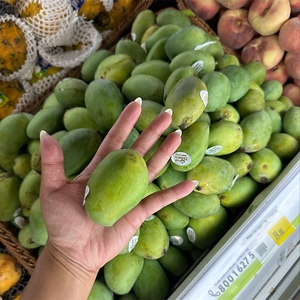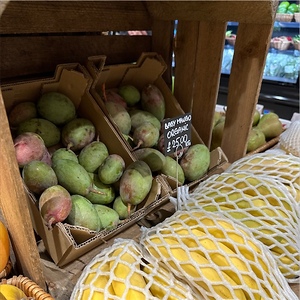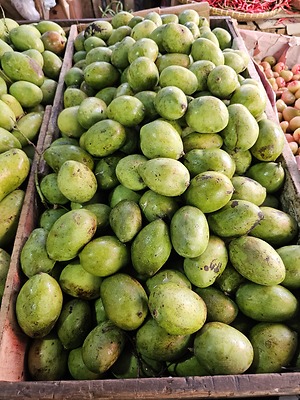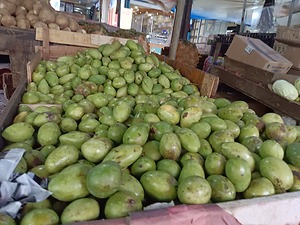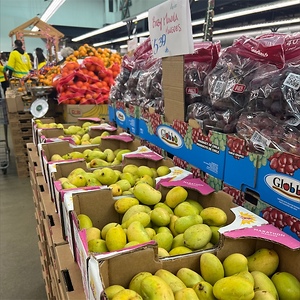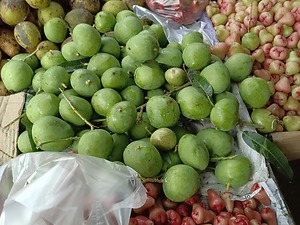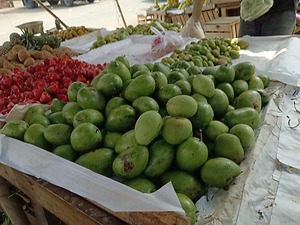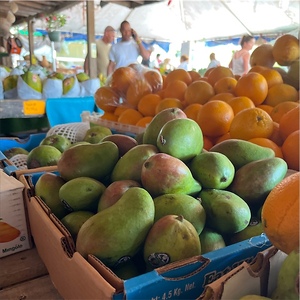

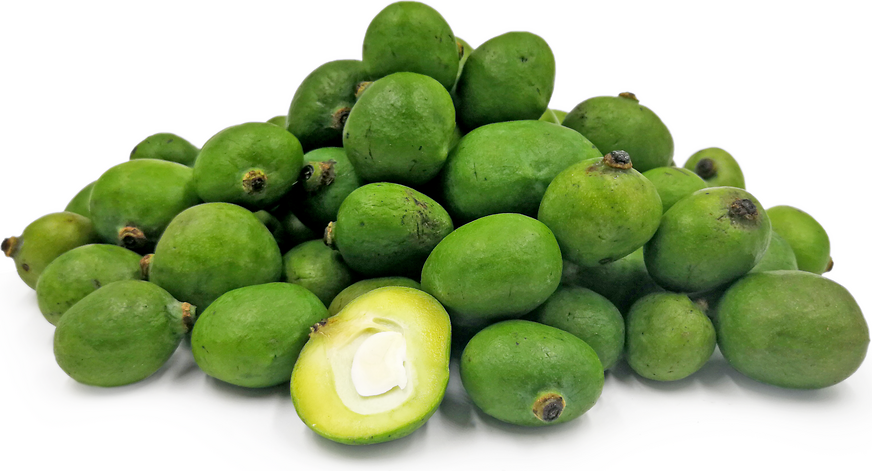
Baby Mangoes
Estimated Inventory, lb : 0
Description/Taste
Baby mangoes are small, round, and flat in shape, averaging 1-3 centimeters in diameter. The skin is smooth, waxy, firm, and a vibrant emerald green. The flesh is toothsome, moist, and yellow to green with a single immature, white, edible seed encased in the center. Baby Mangoes are crisp, acidic, and tangy with nuances of sweet, tropical flavors.
Seasons/Availability
Baby mangoes are available year-round, with a peak season in early summer.
Current Facts
Baby mangoes, botanically classified as Mangifera indica, are the very young versions of raw, or green mangoes. Also known as Vadu Mangai, Maavadu, and Vadu Mango, Baby mangoes are a broad category that is used to describe immature mangoes of various cultivars such as Alphonso or Mulgoba mangoes. Baby mangoes are cultivated for their sharp flavors and are grown commercially and in home gardens in warm weather climates. They are typically hand-harvested, and the fruits with their stems intact fetch a higher price at the market than the ones that have fallen naturally off the tree.
Nutritional Value
Baby mangoes contain dietary fiber, vitamin C, and vitamin B.
Applications
Baby mangoes are primarily used to make Maavadu pickle, which is a traditional South Indian dish served over curd or sambar rice. They are packed in alternating layers with a mixture of salt, chile powder, and turmeric powder and are left to ferment for a week to ten days. Each day, the mixture is shaken to combine the contents and more salt, chile, and turmeric powder is added. The result is a tart, spicy pickle that is served with rice and yogurt. Baby mangoes will keep up to a week when stored in a plastic bag in the refrigerator.
Ethnic/Cultural Info
Mangoes are considered the “king of fruits” in India and have become a prominent cultural symbol. They are referenced in poems, Buddhism, and were once a symbol of class. Today there are many mango festivals held in India that celebrate the fruit as a symbol of summer, good luck, and prosperity. Mango leaves are commonly hung above doors, and Baby mangoes are a sign that summer has arrived as they are an early summer seasonal fruit.
Geography/History
Mangoes originated in Southeast Asia more than twenty-five million years ago and spread from northeastern India, Myanmar, and Bangladesh, to southern India. Today Baby mangoes are largely found in local markets in tropical southern Indian states and can also be found in online seed catalogs and specialty grocers in Southeast Asia, China, and the United States.
Recipe Ideas
Recipes that include Baby Mangoes. One
| Vidhya's Home Cooking |
|
Tender Mango Pickle |
| Tickling Palates |
|
Vadu Mango Pickle |
Podcasts



